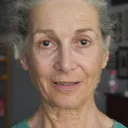Stay in the Loop
BSR publishes on a weekly schedule, with an email newsletter every Wednesday and Thursday morning. There’s no paywall, and subscribing is always free.
Music that moves
Network for New Music presents ArtMusic II: Edward Hopper and Pierre Jalbert

This week the Philadelphia Museum of Art hosted the Network for New Music’s ArtMusic II event, featuring music inspired by art and performed by the Network Ensemble. Over 100 people crowded into the Dorrance Galleries to hear Pierre Jalbert’s new chamber work, Light, Line, Shadow, written in response to Edward Hopper’s painting Road and Trees.
Composer Jalbert, professor of Composition and Theory at Rice University’s Shepherd School of Music in Houston, Texas, spoke briefly about his work and had the ensemble play selections to illustrate his point. Jalbert earned his doctorate in composition at the University of Pennsylvania under the aegis of George Crumb, but Light, Line, Shadow is much more melodic than some of his mentor’s more atonal works.
Yet Jalbert’s sense of form, which he called “architecture” in a post-concert discussion, reflects the artistic designs Crumb gave to so many of his scores. They’re so visually striking that the resulting music is only one facet of their creation.
Curator Jessica Todd Smith spoke of Hopper’s work — donated to the museum in 2016 — and noted he had been a magazine illustrator, creating pictures focused on detail such as a gas station or town. However, in Road and Trees he simply drew a vague landscape, leaving the details to the viewer’s imagination.
Road tripping
Jalbert learned that Edward Hopper loved road trips and made his first movement, “Landscape in Motion,” start with a quiet vibraphone and clarinet, joined by flute and strings. These played amusing rhythmic patterns resembling car honks and ended in an abrupt stop.
The second movement, “Brush Strokes,” included rolled chords on the vibraphone and birdlike tweets from flute and clarinet. John Koen also played extremely high harmonics on the cello. String sounds emerged from a cloud of unstopped vibraphone chords, showing Jalbert’s gift for balancing instruments. The effect worked beautifully in the gallery space.
The third and final movement, “Open Road,” was the least melodic of the three but featured poignantly soft piccolo playing by Edward Schultz in a duet with Bob Butryn’s clarinet. As the piece closed, Jalbert deftly brought back some of the original themes, including the pattern of horn honking and a dark double bass line that added depth to the finale.
After the concert, when Linda Reichert, Network for New Music’s artistic director emerita, asked if the audience saw a connection between the artwork and the composition, the response was mixed. One visitor said that when she could not find a seat at the concert, she circled the gallery; the sounds of Jalbert’s Light, Line, Shadow enhanced the experience of looking at other works of art as well.
What, When, Where
ArtMusic II: Light, Line, Shadow. By Pierre Jalbert. Bob Butryn, clarinet; Eric Derr, vibraphone/crotales; John Koen, cello; Hirono Oka, violin; Edward Schultz, flute; Burchard Tang, viola; Nate West, double bass; conducted by Jan Krzywicki.Network for New Music. July 22, 2018, at the Philadelphia Museum of Art's Dorrance Galleries, 2600 Benjamin Franklin Parkway, Philadelphia. (215) 848-7647 or networkfornewmusic.org.
Sign up for our newsletter
All of the week's new articles, all in one place. Sign up for the free weekly BSR newsletters, and don't miss a conversation.

 Margaret Darby
Margaret Darby